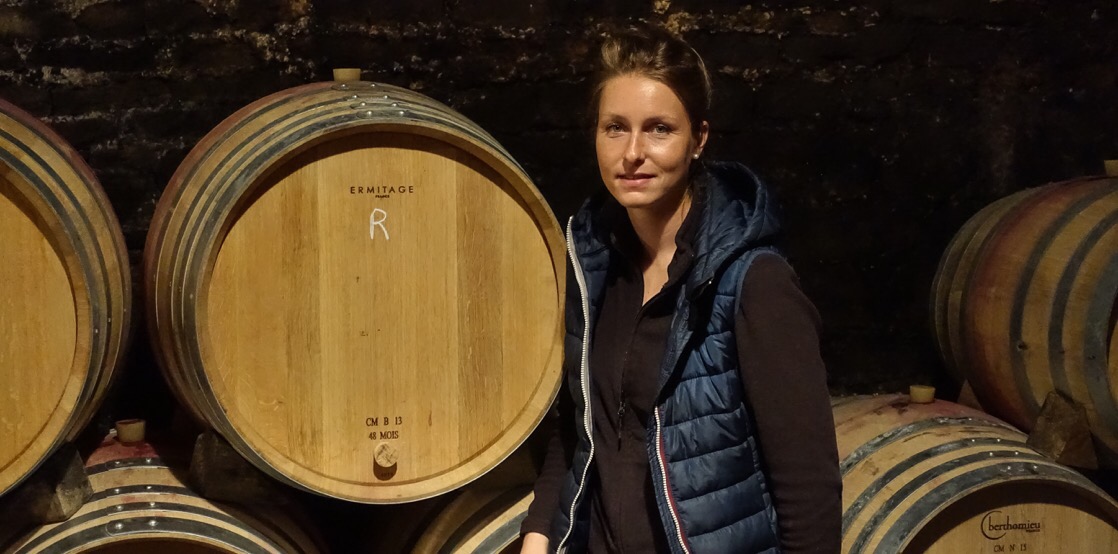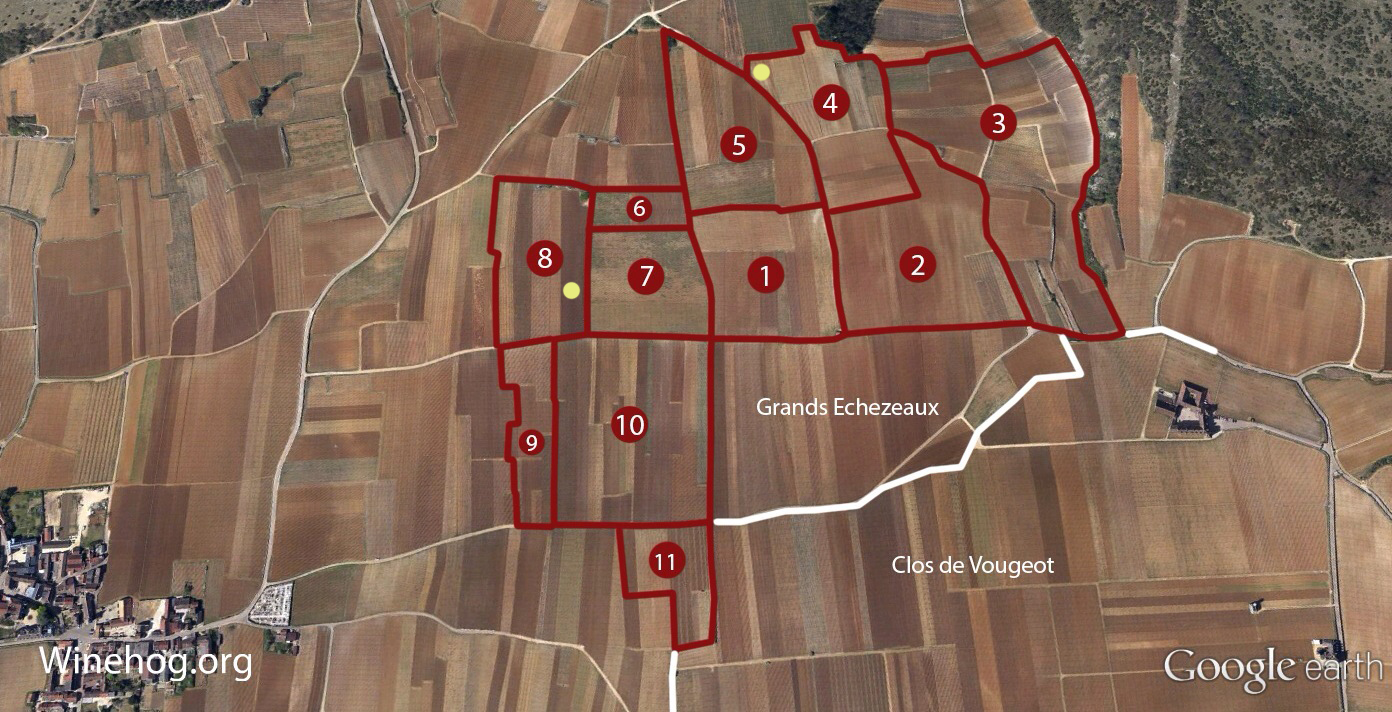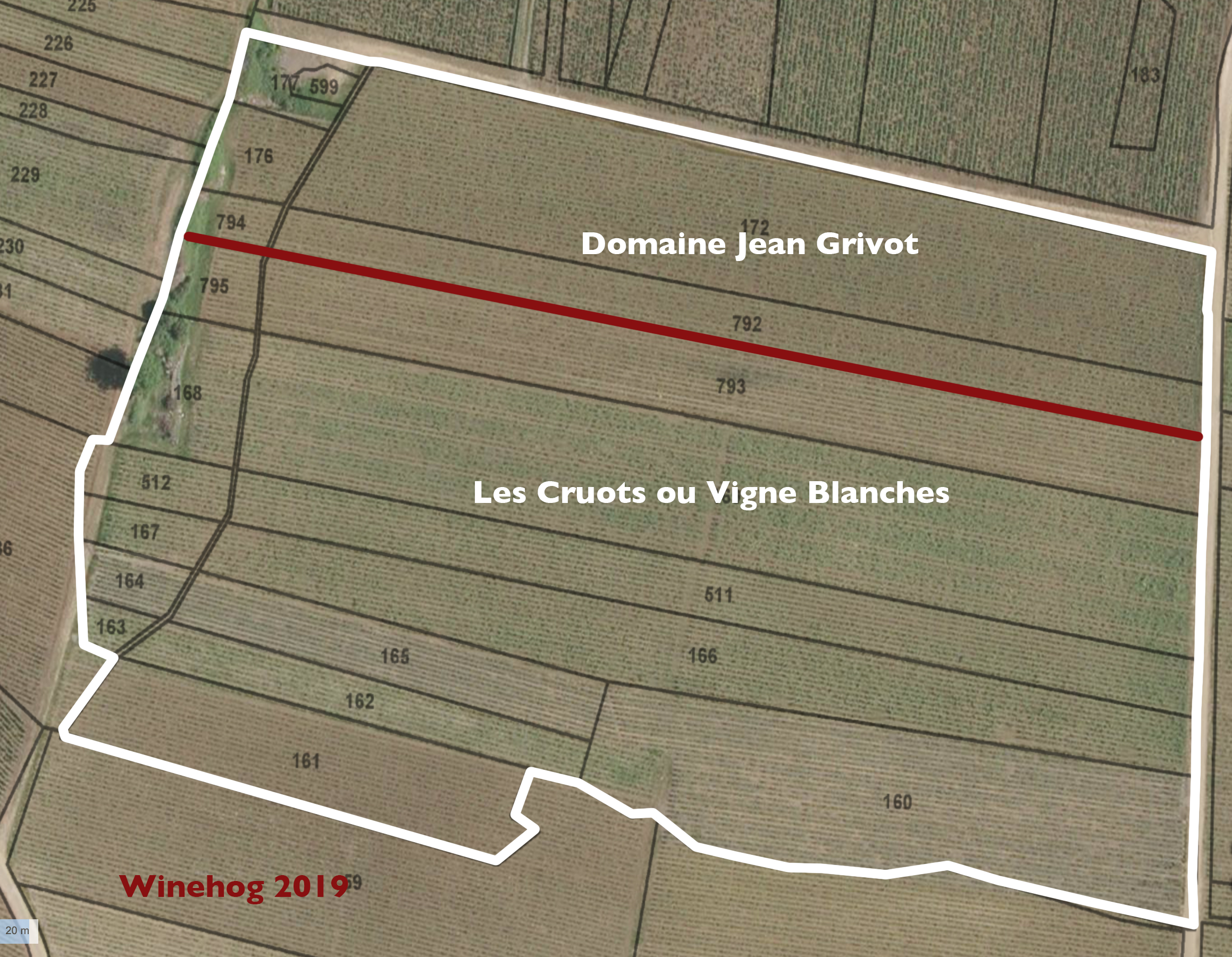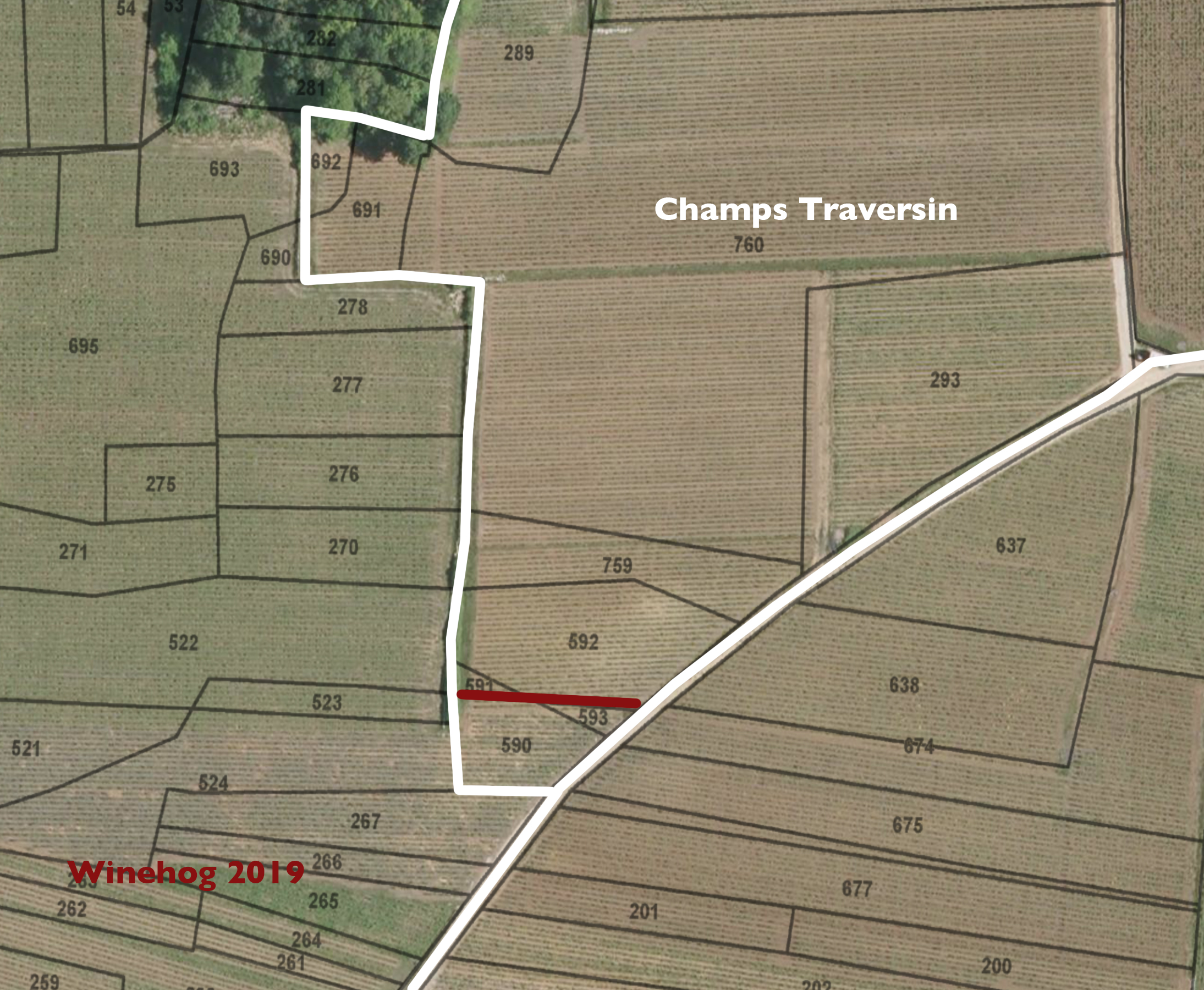Vinmøte Øistein 13. februar 2020
Barolo Percristina 1997, Domenico Clerico
Rik nese med kirsebær og rosevann. Mørk struktur, mye smak, men ikke så mye eik fornemmes faktisk. Vi startet i Brunello, men havnet i Barolo. Holder seg overraskende godt, selv i et legendarisk varmt år. 92 poeng
Vinklubben drakk denne også på generalforsamlingen i 2014:
Barolo Percristina 1997, Domenico Clerico
Mørkere frukt med tydelige fattanniner. Spicy og rik fremdeles. Denne var for rik før, men fremstår mere moderat nå med en grei friskhet intakt og pen lengde. Are ga denne 85 poeng. Knut 93 poeng.
Gjennomsnitt 89 poeng.
Rioja Aurus 1997, Finca Allende
Lysere modne bær med en søtmoden touch. Tørrende eik i finish. De fleste var i Spania. 90 poeng. Ingen løp og kjøp vin på VP Storo til kr. 1 210,- (2007)
Chateau Lafite Rothschild 1988, Pauillac
Utviklet nese med fjøs og brettanomyces. Men samtidig tørr, fragrant og elegant. Sedertre og klassisk i munnen. Litt for glatt og ny etikett. Fake ? Pen og grei vin, men Lafite liksom ? 93 poeng.
Kim serverte også denne i vinmøte august 2014:
Chateau Lafite Rothschild 1988, Pauillac
Leskende lett i en solid stil. Gode og litt tørre tanniner som er ganske typisk for årgangen for rød Bordeaux. Men vinen har en xtra dimensjon og eleganse. En av de beste 1988 Bordeaux, men ikke verdt prisen. 94 poeng
Vinklubben ble stiftet i Oslo 1988. 8 rhoner. Medlem i Norges Vinklubbers Forbund.
torsdag 27. februar 2020
La Grande Rue 2002, Domaine Lamarche
Vinmøte Øistein 13. februar 2020
Pommard Pezerolles 1998, Hubert de Montille
Transparent og moden, litt grønn og undermoden, servert litt på den kalde siden og flere mente dette var en nebbe. Syrerik, frisk og elegant. Rustikk og ganske typisk Pommard og for små tanniner for en nebbiolo. Alle endte opp i burgund til slutt. 90 poeng
Fra demontille.com:
"Les Pézerolles", at the northern end of the appellation, borrows from Beaune its delicate bouquet and structure. It is the most refined Pommard as it typically makes feminine wines akin to Volnay, located paradoxically on the other side of the village. Our parcel sits in the heart of the cru, the best part of which was formerly part of "Le Clos de Pézerolles".
The name comes from the old French "Poizerolles", which around the 12th century meant "chickpeas". It is likely this legume was cultivated next to vines.
If "Les Rugiens" is the Grand Cru of Pommard, "Les Grands Épenots" is the archetype of the appellation and "Les Pézerolles" is an outsider. It can be difficult to identify this Pommard in blind tastings because it is atypical. Its floral, perfumed and yet subtle aromas mix with small red and black fruits which are framed by a rather light, svelte and feminine structure accompanied by a simultaneously generous yet tense texture.
Domaine de Montille is known to craft wines with great aromatic purity, always favoring balance and elegance over power and extraction. The wines are classic expressions of Burgundy, produced in the most natural way possible and possessing an impressive ability to age, as the family believes only time can reveal the true potential of the greatest wines. The domaine's current style remains faithful to Hubert's natural and idealistic approach, which demanded considerable patience while waiting for appropriate drinking windows for certain vintages. Etienne, however, has taken up the task to bring greater aromatic expression and silkier and more unctuous textures to the reds, allowing them to drink earlier, without compromising their ability to age. The domaine is known in Burgundy, among others such as Arlot, DRC, Dujac and Leroy, to regularly vinify using a significant proportion of whole clusters, varying by cuvée and by vintage.
The Domaine has practiced organic viticulture since 1995. Today, our wines are certified by Ecocert. Additionally, since 2005, biodynamic practices have been implemented to show our full respect for these living soils.
La Grande Rue 2002, Domaine Lamarche
Transparent, men mørkere enn forrige vin. Betydelig mer elegant og flere var på Giacosa (!?) Stram, frisk med lyse jordbær. Noe soya, slepne pene tanniner og sursøte bær. Overraskende ung i uttrykket for en 02 og en av de beste vinene drukket fra denne produsenten. 94 poeng
Chambolle Musigny Les Sentièrs 2015, Philippe Pacalet
Transparent kjølig ung frukt. Strammer seg i munnen og igjen var vi i nebbland ! Roer seg i glasset via US Pinot landet vi på en rød burgunder. Ikke så naturvin som produsenten er kjent for. Og vinen er ren og balanserer OK. Selv om han ikke bruker noe svovel i sine viner. Men ingen stor Chambolle. 88 poeng
tirsdag 18. februar 2020
Puligny Montrachet Les Pucelles 2011, Domaine Leflaive
Vinmøte Øistein 13.februar 2020
Rioja Blanco Gran Reserva 2012, Hacienda Lopez de Haro
Gul, krydder, curry, steinaktig, i en utviklet stil med lav syre. Mandarin, rik nese, en litt rar vin og vi var i Portugal eller Spania. Kim var i Rhone. 87 poeng
Dn; Dufter av voks og nøtter med hint av lær. Moden og krydret frukt på smak med en balansert syre og en lang og fyldig utgang. Kr. 269,-. 86 poeng
Puligny Montrachet Les Pucelles 2011, Domaine Leflaive
Blank transparent, grønn med frisk syre. Lite utviklet, relativ enkel i munnen og en vanskelig vin å vurdere. Stilkete, ung vin, stram, Aligotè ? Knut var tidlig på Chardonnay ! Lite utviklet for en 9 år gammel vin. Thight og en gjerring Leflaive. Vil den utvikle seg positivt eller er det bare en vanskelig årgang ? 90 poeng
Denne beskrivelsen fra Cellartracker passet ganske godt: The nose is initially bright green and yellow apple and mild citrus. Slight reduction, but not the Leflaive grand cru caliber gunpowder. Quite mineral and slightly saline in a youthful phase. Candied lemon bits. The palate is missing concentration and weight, and has thin yellow apple fruit. The acid is quite nice, but the fruit is a real let down. This is assisted by air, and the nose is interesting, but the palate never picks up any staying power on the back end. Slightly longer and more dense after 90-minutes. I am consistently disappointed with the Leflaive premier crus, but always love Batard, BBM, and Chevalier. 90
Clos de la Coulèe de Serrante Savennières 1998, Nicolas Joly
Gylden, moden, rik og relativt fet i munnen. I munnen senhøstet riesling med rulletobakk og en fin balansert syre. Lars Ivar var raskt på riktig vin. En av de bedre Coulèe dS Vinklubben har hatt og dette er vel før botrytis tok over smaksprofilen til hans viner. Hele 91 poeng faktisk.
From bowlerwine.com:

Domaine de Chevalier Blanc 2003, Pessac Leognan
Blomster, eple, ullsokk, svovel med noe røykpreg. Lang finish med et litt overmodent preg. Som passer godt til den varme årgangen. Litt reduktiv og lukket. Noen var på Roulot, mens andre var på hvit Bordeaux. Vellykket vin i en vanskelig årgang for hvitvin. 92 poeng
Pinot Gris Rèserve Personnelle 2013, Trimbach
Bruspulver. litchi, hyllebær og vi var vel relativt raskt på Pinot Gris. Selv om Kim hang noe igjen på Gewûrz. Utviklet varm nese, moste jordbær. God vin til prisen (2015 VP kr. 375,-) 89 poeng
Rioja Blanco Gran Reserva 2012, Hacienda Lopez de Haro
Gul, krydder, curry, steinaktig, i en utviklet stil med lav syre. Mandarin, rik nese, en litt rar vin og vi var i Portugal eller Spania. Kim var i Rhone. 87 poeng
Dn; Dufter av voks og nøtter med hint av lær. Moden og krydret frukt på smak med en balansert syre og en lang og fyldig utgang. Kr. 269,-. 86 poeng
Puligny Montrachet Les Pucelles 2011, Domaine Leflaive
Blank transparent, grønn med frisk syre. Lite utviklet, relativ enkel i munnen og en vanskelig vin å vurdere. Stilkete, ung vin, stram, Aligotè ? Knut var tidlig på Chardonnay ! Lite utviklet for en 9 år gammel vin. Thight og en gjerring Leflaive. Vil den utvikle seg positivt eller er det bare en vanskelig årgang ? 90 poeng
Denne beskrivelsen fra Cellartracker passet ganske godt: The nose is initially bright green and yellow apple and mild citrus. Slight reduction, but not the Leflaive grand cru caliber gunpowder. Quite mineral and slightly saline in a youthful phase. Candied lemon bits. The palate is missing concentration and weight, and has thin yellow apple fruit. The acid is quite nice, but the fruit is a real let down. This is assisted by air, and the nose is interesting, but the palate never picks up any staying power on the back end. Slightly longer and more dense after 90-minutes. I am consistently disappointed with the Leflaive premier crus, but always love Batard, BBM, and Chevalier. 90
Gylden, moden, rik og relativt fet i munnen. I munnen senhøstet riesling med rulletobakk og en fin balansert syre. Lars Ivar var raskt på riktig vin. En av de bedre Coulèe dS Vinklubben har hatt og dette er vel før botrytis tok over smaksprofilen til hans viner. Hele 91 poeng faktisk.
From bowlerwine.com:
Coulée de Serrant has a long and proud history. Once a monastic vineyard- parts of the estate have been under vine for almost 900 consecutive vintages to date- it lies completely within the boundaries of Savennières, and is actually one of the few estates in France that is also its own appellation.
Nicolas Joly had a successful career in finance when he took over his family’s estate in the Loire in 1977. “They told me that my mother had been running the estate well, but in an old fashioned way, and it was now time for some modernity. I was told that if I started using weed killers, I’d save 14,000 Francs.” He took this advice, but regretted it almost immediately; the biodiversity in his vineyards plummeted. Even the soil seemed to die. Joly wasn’t a follower of the green movement when he picked up a book on biodynamics; he was simply trying to find a better way to manage his vineyards. Since then, he has become one of the great authorities in the field, and his holdings have been farmed using biodynamic principles since 1984.
Nicolas now manages the winery with his daughter, Virginie. Following biodynamic principles, the Joly's use compost from their own herd of cows, donkeys, horses, and goats. To limit the negative effects of monoculture, more than a dozen different native plants are found throughout the vineyards, allowing each root to develop different micro-organisms. Sheep feed on the cover crop and leave manure. In the spring, a chicken coop is set up in the areas with snails. Biodynamic preparations are made from medicinal plants (mostly from the winery property) including: sage, sorrel, willow, nettle, elm, oak bar, arnica, and blackthorn. Horses are used to plow between the rows, and of course, no pesticides come anywhere near these pristine vineyards. Grapes are harvested late, so that the wines gain in complexity. In the opinion of the Joly family, Chenin achieves complexity only when it is fully ripe. To harvest the most perfectly ripe berries, harvesting is done in several passes. In the winery, the process is as natural and hands-off as possible. There is no chaptilization, only indigenous yeasts are employed, there is no settling of the grape must, and natural temperature variation is allowed during fermentation. Because fermentations take place naturally, they may last 2 to 4 months or more. While this is a terrifying prospect to most winemakers, it is simply how things are done at this famed estate.

Domaine de Chevalier Blanc 2003, Pessac Leognan
Blomster, eple, ullsokk, svovel med noe røykpreg. Lang finish med et litt overmodent preg. Som passer godt til den varme årgangen. Litt reduktiv og lukket. Noen var på Roulot, mens andre var på hvit Bordeaux. Vellykket vin i en vanskelig årgang for hvitvin. 92 poeng
Bruspulver. litchi, hyllebær og vi var vel relativt raskt på Pinot Gris. Selv om Kim hang noe igjen på Gewûrz. Utviklet varm nese, moste jordbær. God vin til prisen (2015 VP kr. 375,-) 89 poeng
Etiketter:
Alsace,
Domaine Chevalier,
Domaine Leflaive,
Hazienda Lopez de Haro,
Hvit Bordeaux,
Hvite burgundere,
Loire,
Nicolas Joly,
Pinot Gris,
Pucelles,
Puligny Montrachet,
Rioja,
Savennieres,
Spania,
Trimbach,
Vinmøte Øistein 13. februar 2020
Champagne "Les Chètillons" Blanc de Blancs 2002, Pierre Peters
Vinmøte Øistein 13. februar 2020
Champagne Cuvèe Spèciale "Les Chètillons" Blanc de Blancs 2002, Pierre Peters
Frisk og typisk for huset; en ren og elegant champagne. Mye energi, citrus, "cuveeaktig" og rik. Vi tok igjen feil av Bland de Blancs og mix/Pinot ! Men det var endel rødt epleskall her ! (Dette sa MB i Dn da den ble lansert i Norge (93 poeng) ;Tropisk frukt og røde epler på duft. Rik og bløt frukt med frisk syre og nydelig fylde og konsentrasjon på smak. En flott og deilig champagne. Balansert og moden. Mangler kanskje den xtra wow-faktoren. Litt uenighet om hvilken av de 2 champagnene som var best. Referansen for de fleste i klubben vs. produsenten var 1996 årgangen. Det kan virke som produsenten lager sin champagne i en litt mer tilgjengelig stil ? 92-94 poeng
Champagne Cæur de Cuvèe Premier Cru 2002, Vilmart & C
Nedfallsepler og igjen en moden champagne. Stor og kompleks med lang ettersmak. Røde druer, rik og mektig. Finkornet og elegant mousse. Aprikos, autolyse og brioche. Eik fra eldre fat, Roar mente dette var en Winston Churchill fra Pol Roger. Mangler endel presisjon og snert. I glasset over tid mer morsom enn korrekt. 93 poeng.
Vi besøkte Wilmart i 2014 ; http://vinerd.blogspot.com/2015/01/wilmart.html
Frisk og typisk for huset; en ren og elegant champagne. Mye energi, citrus, "cuveeaktig" og rik. Vi tok igjen feil av Bland de Blancs og mix/Pinot ! Men det var endel rødt epleskall her ! (Dette sa MB i Dn da den ble lansert i Norge (93 poeng) ;Tropisk frukt og røde epler på duft. Rik og bløt frukt med frisk syre og nydelig fylde og konsentrasjon på smak. En flott og deilig champagne. Balansert og moden. Mangler kanskje den xtra wow-faktoren. Litt uenighet om hvilken av de 2 champagnene som var best. Referansen for de fleste i klubben vs. produsenten var 1996 årgangen. Det kan virke som produsenten lager sin champagne i en litt mer tilgjengelig stil ? 92-94 poeng
Champagne Cæur de Cuvèe Premier Cru 2002, Vilmart & C
Nedfallsepler og igjen en moden champagne. Stor og kompleks med lang ettersmak. Røde druer, rik og mektig. Finkornet og elegant mousse. Aprikos, autolyse og brioche. Eik fra eldre fat, Roar mente dette var en Winston Churchill fra Pol Roger. Mangler endel presisjon og snert. I glasset over tid mer morsom enn korrekt. 93 poeng.
Vi besøkte Wilmart i 2014 ; http://vinerd.blogspot.com/2015/01/wilmart.html
tirsdag 4. februar 2020
Bør 1cru vinmarken Malconsorts oppgraderes til Grand Cru ? 2009
Litteraturhuset 16.1.20
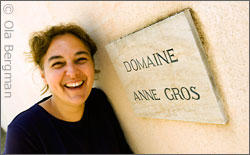

2009 er en utfordrende årgang, men jeg synes den holder seg overraskende godt. Vosne Romanèe Aux Malconsort 2009 fra Domaine de Montille viste grønn paprika, årgangstypisk relativ dyp og mørk aroma. God balanse, en rik vin som tørrer litt på finish. Men tror vel kanskje ikke den blir så mye bedre. 93 poeng
Echezeaux Les Loachausses 2009 fra Domaine Anne Gros var mørk og hadde et litt varmt og kokt strøk på nesa. Jordbær med brede skuldre og litt for stor ekstraksjon. Kanskje ikke så elegant, men roer seg endel i glasset. Lang ettersmak. Litt vanskelig vin å vurdere. 92 poeng.
Fra hjemmeside:
After receiving a diploma from the Dijon school of commerce, Francois Gros worked in the family business along side his brothers and sister taking care of the accounting. Then Domaine Gros was divided. In 1963, he married Danielle Knecht. He worked with his brother Jean until 1970. Then he decided to look after his own vines which consisted of 3 ha. He started from scratch by building his own winery in 1971 and at the same time created a small negociant business. In particular, the wines were sold to clients passing through the region thanks to a tasting cellar located on the RN74. The wines were sold under the label François Gros as well as Gros père et fils. Then, in 1978, health problems required him to cut back on his activities. The domaine had to sell practically its entire production in barrels to a burgundian negociant. François’ own negociant business ceased to exist. For 10 years, the activities of the domaine diminished. In 1988, Anne started over, creating Domaine Anne and François Gros (François cared for the various vineyard parcels while Anne managed and worked at the domaine). In 1995, the domaine restructured taking the name domaine Anne Gros.
mandag 3. februar 2020
Bør 1cru vinmarken Malconsorts oppgraderes til Grand Cru ? 2008
Smaking Litteraturhuset 16.1.20:
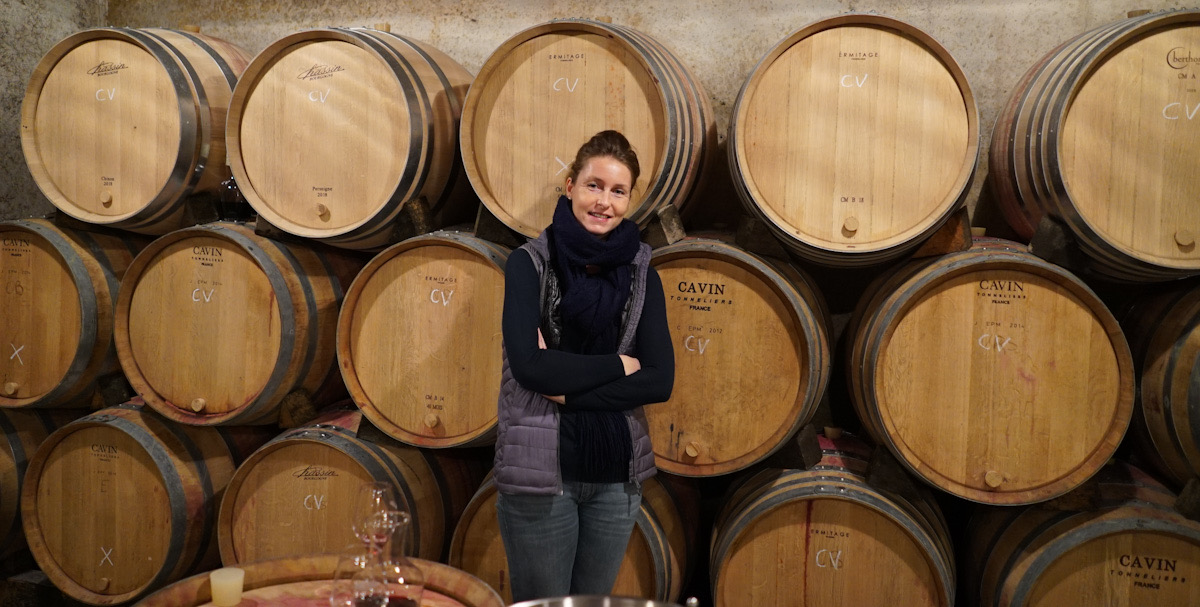

Mathilde Grivot
Årgangen 2008 i rød burgund er ikke vurdert som den beste, men kommer man litt opp i klassifikasjon er det mange gode viner. Vosne Romanèe Les Malconsort 2008 fra Domaine deMontille synes jeg faktisk var bedre enn Christiane Cuveen fra 2006 ! Transparent, elegant, fresh, moden med innslag av jordbær og fat. Bra konsentrasjon og her gir den rustikke 08 karakteren vinen et løft. 93 poeng.
Vosne Romanèe Les Malconsort 2008 Sylvain Cathiard var en skuffende vin som ikke innfridde forventningene. Mørkere frukt, syrlig og vanskelig i munnen. Har årgangens rustikke urtepreg og mangler "silkeføret" som Cahthiard ofte viser fram. Men vinen har et bakenforliggende godt trøkk og tror den kan bli bedre ved lagring. 91 poeng
Echezeaux 2008 fra Domaine Jean Grivot viste en typisk stil slik Grivot lagde vin før 2010. Hard og mørk frukt, steinaktig og kjølig. Ikke grønn, men den rustikke frukten tørrer i finish. Tror ikke denne blir noe spesielt bedre. 90 poeng.
Fra winehog:
Echezeaux Les Cruots or if you like Echezeaux Les Vigne Blanches is one of the most interesting terroirs in the Flagey-Echezeaux part of Burgundy.
Henry Jayer found this to be one of the best terroirs in the large Echezeaux grand cru – and Jayer apparently made a special Echezeaux cuvée from this vineyard.One of the most important owners of this terroir is today Domaine Jean Grivot … in my view one of the best producers of Echezeaux currently.
The Jayer link
I think it’s important to understand the quality of the vineyard Les Cruots ou Vignes Blanches as this was the core in the best Henri Jayer Echezeaux made and the core of other great Echezeauxs.There is also a link between the Jayer family and the Grivot holdings in Echezeaux as the Grivot plots has in Echezeaux are from the Jayer family.
Jean Grivot, the father of Etienne Grivot, married Yvonne Jayer who is the daughter of Louis Jayer – the cousin of Henri Jayer – and the son of Jean-Francois Jayer and Jeanne Marchand (1870 – 1953). Louis also had a second daughter Jacqueline and she also had some vineyards from the Jayer heritage – and these are also included in the Grivot holdings today.The main part of the Grivot Echezeaux vineyard – cadastre plot 172 and 176 – presumably comes from the Yvonne and Jacqueline Jayer side of the family.
Moving back to Jean-François Jayer – he also had a daughter, Jeanne, who married a Sirugue in Vosne-Romanée and their daughter, Marthe, married a Lamadon in Vosne-Romanée.In 2006 the Lamadon family decided to stop the wine production, and the plots of the Lamadon family was then divided between Louis-Michel Liger-Belair of Domaine du Comte Liger-Belair (metayage), the Lamarche family and the Grivot family, as the Lamadons are cousins of the Grivots.
In Grivots case the cadastre plots 792 and 794 in Les Cruots ou Vignes Blanches and presumably also the plots 590 and 593 in Champs Traversin – as these are side by side with plots rented to Liger-Belair.
The Echezeaux from Domaine Jean Grivot
The Echezeaux from Domaine Jean Grivot is produced from two different climates in Echezeaux – Le Cruots ou Vignes Blanches (8), Champs Traversin (4) – see yellow dots on map below.
The 11 climates on Echézeaux are:
- Echézeaux du Dessus
- Les Poulailléres
- En Orveau
- Les Champs Traversins
- Les Rouges du Bas
- Les Beaux Monts Bas
- Les Loächausses
- Les Cruots ou Vigne Blanches
- Clos St. Denis
- Les Treux
- Les Quartieres de Nuits
The total area of the 7 plots is 0.8460 ha – and represents a mix of terroirs from the Echezeaux vineyard (Champs Traversin) and the middle part Cruots ou Vignes Blanches. To be honest the Cruots ou Vignes Blanches is the dominant terroir – and presumably the plots on Champs Traversin has rather little influence on the wine.
Les Cruots ou Vignes Blanches
The plots in Les Cruots are located in the northern part of the vineyard running from top to bottom in the climate. The area of the five plots are 0.7970 ha combined – see map below.
The five plots are 172, 176, 792, 794 and finally 599 a small plot located in the top of the vineyard.
Champs Traversin
The plots on Champs Traversin are located in the southern end of the vineyard. The two plots – 590 and 593 are only 0.0490 ha in total – see map below.
The wine
The Jean Grivot Echezeaux is in my view one of the very best from the appellation. The Echezeaux and the other wines in the Grivot portfolio have improved significantly since 2007 and even further in 2010 and especially the wines from 2010 and onwards are quite outstanding.
Abonner på:
Innlegg (Atom)




















